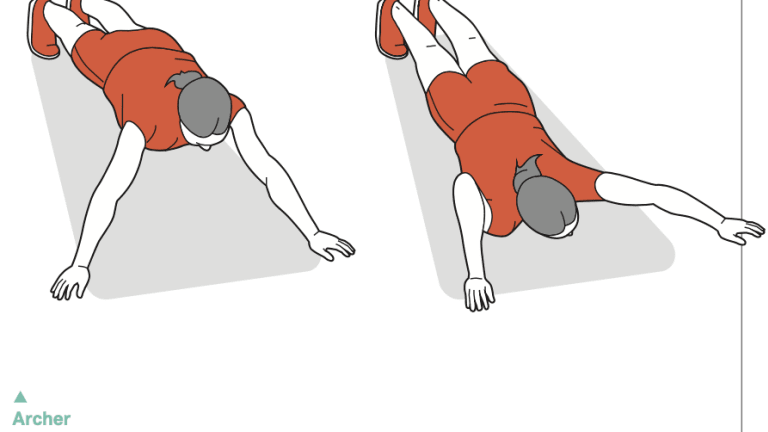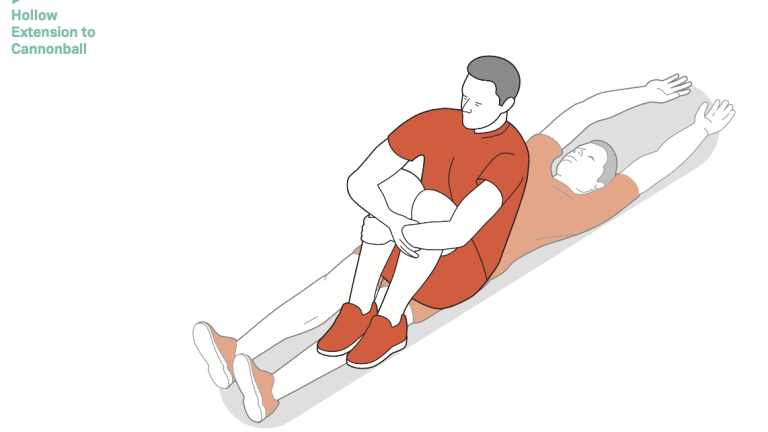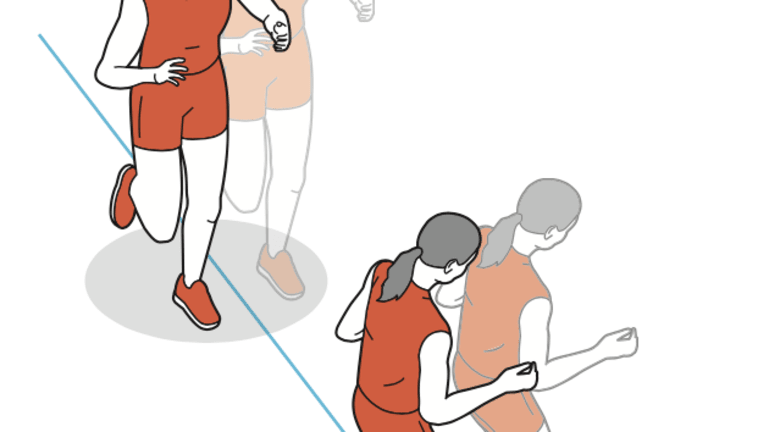The Quarantine Workout
By Jon Levey Jun 19, 2020Gauff reaches Stuttgart quarterfinals with win over Vickery. Sabalenka also advances
By Associated Press Apr 17, 2024WTA Stuttgart, Germany
Aryna Sabalenka wins bestie battle against injured Paula Badosa in late-night Stuttgart match
By David Kane Apr 17, 2024Style Points
Look of the Week: Zendaya aces two looks for Challengers premiere, Venus, Genie & more hit LA red carpet
By Baseline Staff Apr 17, 2024Good Trouble with Nick Kyrgios
Naomi Osaka reflects on the lessons of her past, the reality of her present and hopes for the future
By Baseline Staff Apr 17, 2024WTA Stuttgart, Germany
Coco Gauff rallies in first clay match of 2024, defeats Sachia Vickery in Stuttgart
By David Kane Apr 17, 2024Nadal loses to De Minaur in second round at Barcelona. Spaniard had returned from injury layoff
By Associated Press Apr 17, 2024ATP Barcelona, Spain
Rafael Nadal bows out of 2024 Barcelona, loses second round to Alex de Minaur
By David Kane Apr 17, 2024Social
“Lucky charm” Ons Jabeur snaps five-match losing streak in Stuttgart
By Baseline Staff Apr 17, 2024Pop Culture
Zendaya wants to meet Coco Gauff, while her grandma is 'so excited' for 'Challengers'
By Baseline Staff Apr 17, 2024The Quarantine Workout
Take advantage of a forced off-season by elevating your fitness game.
Published Jun 19, 2020
Advertising
For more on recreational tennis during this unprecedented time—including the best quarantine workout; a guide to improving your ball toss from your couch; what the pros have done to stay active; nutrition tips, advice on how to cope with COVID-19; and drills while hitting against a wall (of any size)—click here.
Unless you have access to a private court, playing the sport you love has become more difficult than ever. So for the meantime, consider something that could pay significant dividends when tennis courts open up again: improving your fitness. Even while cordoned inside your home with no proper gym equipment, you can still get stronger and faster. And because you’re not saving anything for the court, you can push yourself even harder.

The Quarantine Workout
Advertising
If you have access to weights and additional loads (dumbbells, barbells, kettlebells, etc.) use them to increase the difficulty level. However, since such equipment may be scarce, creativity could be necessary. Rather than resistance, volume will be your tool: instead of adhering to specific rep parameters, an exercise should be performed for as long as it takes to fatigue the muscles involved. Some movements may take 10 reps to accomplish this; others could require up to 30. It’s why several suggested exercises contain pauses and slower tempo to apply greater tension to the muscle. That’s how you turn a light dumbbell into an engine block.
This also goes for your set design. The exercises are arranged to alternate between primarily lower and upper-body movements. This gives flexibility in the way in which you tackle them. The goal is to progressively overload the muscles either by escalating resistance or reps, or by shortening rest periods from the previous workout. Here are some possibilities:
1. Straight Sets: Do 3-4 sets of each exercise with about 90 seconds of rest in between, gradually increasing the weights as they become routine.
2. Circuit Training: Pick a rep target for each exercise and perform all five back-to-back. Since each exercise works on a different movement pattern, you rest one part of the body while working another. Each circuit counts as one round. Perform 3-5 rounds, resting as needed. Try to increase rep numbers with each workout.
3. Timed Intervals: Instead of reps, perform exercises for time. Use an interval timer to segment each minute into work and rest periods. A 40:20 seconds ratio pairs well with lighter resistance and emphasizes conditioning; 30:30 is more appropriate for heavier loads or more difficult movements. This can be done one exercise at a time for a certain number of sets before moving on to the next exercise, or one after the other as a circuit for a set time period.
4. EMOM: Start a running clock or set an interval timer to ring at one-minute rounds. At the top of every minute, perform a set of the first exercise. However long it takes to complete, take the remainder of the minute to rest. At the top of the next minute, perform the next exercise in the circuit. Hence, the anagram: (E)very (M)inute (O)n the (M)inute. The more you fatigue and the longer it takes to perform a movement, the shorter the rest. Alternatively, you can work for as long as you can each minute and then rest for whatever time remains. Try for 3-5 circuits.

The Quarantine Workout
© AFP via Getty Images
Advertising
Pick one exercise from each movement category. A finisher done at the end of the workout will put a punctuation mark on the training session.
—First & Third Days (Monday & Friday)
SQUAT
Air Squat
Stand with your feet slightly wider than shoulder width, bend your knees toward your toes and push your hips back as though sitting in a chair until your upper legs are at least parallel to the ground. Pause briefly and rise up under control. You can increase difficulty by holding weights or even wearing a loaded backpack.
Tempo 1 and ½ Squat
Perform a standard squat, only now take four seconds to lower your thighs to parallel. Pause briefly, slowly rise up halfway and lower again under control. After another brief pause take another four seconds to rise up, stopping just short of full knee extension to keep tension on the muscles throughout the movement.
Bulgarian Split-Squat
Stand with your back to a knee-high bench, chair or table. Split your legs so one foot is on the floor and the top of your rear foot is placed on the object. Slowly lower your body with an upright torso until your front knee is about 90 degrees. Pause briefly and rise back up, again stopping just short of full knee extension for maximum tension. Do all reps on one leg before switching.
PUSH
Pause Push-up
Face the floor with your body in a plank position— hands under your shoulders, feet pressed into the floor, back flat and core tight. Bend your elbows to lower your chest to just above the floor, keeping your body taught. Pause for a two-count in the bottom position. Push into the floor to lift your body to the starting position. To increase difficulty, you can elevate your feet on a chair or sturdy object, or add a shoulder tap after each rep.
Archer Push-up
Widen the hands slightly and turn fingers more outward than a standard starting push-up position. Lower your chest down more to one side so that your right pec is just above your right hand, and your left arm is mostly straight. This requires more body control than a standard push-up and forces one arm to support and move more of the bodyweight. Push back up to the starting position. Alternate sides with each rep.

The Quarantine Workout
Advertising
Pike Push-up
Start in the standard pushup position. Raise your hips with straight legs so your body forms an upside-down V. Bend your elbows to lower your body to the floor, allowing your chin to travel out just past your hands and above the floor. This shifts tension more towards the shoulders. Pause briefly and then straighten the arms back to the starting position. To increase difficulty, elevate feet on a chair or sturdy object. Highly advanced trainees can walk their feet up a wall to do handstand push-ups.
HINGE
Hip Thrust
Position your upper back on a bench, chair, bed or other sturdy object, with feet flat and hips sagging just above the floor. Drive through the heels to raise the hips. Accentuate the squeeze on the glutes and hamstrings for several seconds before slowly lowering back down to the starting position. If this is too easy, keep one foot off the floor and perform single-legged.
Reverse Sliding Lunge
Stand on a slick surface wearing socks, or with one foot standing on a towel. Slowly slide one foot backward while shifting most of your weight to the front leg. Lean forward as you descend to put more of the strain on the muscles of the back of leg. Reach down and lightly touch the floor next to the lead foot with both hands. Slowly slide the back leg up to the starting position while squeezing the working glute to complete the rep.
Hamstring Floor Curl
Lie face-up with your heels on furniture sliders, paper plates or a towel on a slick floor. Lift your hips off the floor and drag your heels toward your butt. Squeeze your glutes to maintain the bridge throughout the movement, especially when slowly returning your feet to the starting position.
PULL
Pull-up
You can’t beat the pull-up for upper back development. Many people have portable pull-up bars in their home; if that’s not you, try to find something comparable outdoors. Hang from the bar with legs either pointing down and slightly out in front of your body, or crossed behind you. Then pull yourself up to the bar. Use an overhand, just outside shoulder-width grip for a pull-up, or an underhand, shoulder-width grip for chin-ups.
Inverted Bodyweight
Row Take two chairs of equal height and place a broomstick or similar object across the backs or arms so that it’s secure and around hip level. Lying face-up underneath the broom, grab it with a slightly wider than shoulder width overhand grip. Keeping your body straight and tight, bring your chest up toward the broom by focusing on pulling back with your elbows and squeezing your shoulder blades together. Lower slowly back down to complete the rep.
Body Pulldown
Put your knees on furniture sliders, paper plates or a towel on a slick or hardwood floor. Place your hands on the floor, just outside of shoulder width, and slowly push your knees back until your upper body is just above the floor. With relatively straight arms, engage the lats to pull the body back up. Or do it unilaterally by putting one forearm on the floor, and using the other hand as a stabilizer.
CORE
Spiderman Plank
Lie face down in a plank position with your forearms and feet supporting your weight. Keep the body tight in a straight line. Lift the right foot off the floor and drive the right knee up toward the right elbow. Pause briefly and return under control. Repeat with the left leg. That’s one rep.
Reverse Snow Angel
Lie face down with your arms above your head. Lift your arms and legs off the floor so that your torso and hips are the only body parts touching, forcing your lower back, glutes and hamstrings to fire. Slowly circle your arms back toward your butt as far as you can, lightly touching if possible. Circle back under control and touch hands above your head to complete the rep.
Hollow Extension to Cannonball
Lie on your back in a hollow body position—lower back pressed into the floor, abs tight, legs and arms both extended and elevated about a foot off the ground. In one fluid motion, raise your upper body up and bring your knees to toward your chest and circle them your arms—just like if jumping into a pool. Return back to the hollow position to complete the rep.

The Quarantine Workout
Advertising
FINISHER
Sally Up, Sally Down
Released 20 years ago by Moby, “Flower” is a tedious listen. However, fitness fanatics have figured a way to put the song’s repetitiveness to good use on exercises such as the squat. Every time the lyrics instruct: “Green Sally up”—stand up. Every time “Green Sally down” is repeated, sink into a squat. Don’t stand back up until Sally is commanded to do so. (All will become clear once you hear it.) Over the 3.5-minute song you will perform 30 pause reps and four extended holds. On the first strength day, do it with bodyweight squats—if you’re quad-zilla, try it with added weight. On the next strength day, attempt it with push-ups: keep your chest just above the floor in the down position. If you fail before the song ends, drop your knees to the floor to complete.
Advertising

The Quarantine Workout
© AFP via Getty Images
Pick one sprint and one agility drill to do in a single workout. If you want extra conditioning, add a 20-to-25-minute easy run at the conclusion, or try the finisher.
—Middle Day (Wednesday)
WARMUP
Spend 5-10 minutes doing light aerobic work and stretches.
SPRINTS
Sprint Ladder
Set up objects (cones, balls, discs) 10, 20, 30 and 40 yards from a starting point.
• Sprint 10 yards, rest 10 seconds
• Sprint 20 yards, rest 20 seconds
• Sprint 30 yards, rest 30 seconds
• Sprint 40 yards, rest 40 seconds
• Sprint 30 yards, rest 30 seconds
• Sprint 20 yards, rest 20 seconds
• Sprint 10 yards, rest 2 minutes
Repeat the ladder.
EMOMx12 Sprints
Set up markers at 10 yards and 50 yards from a starting point. At the start of a running clock, sprint 50 yards. Walk or jog back to the starting line. At the 1:00 mark, run a 10-yard shuttle back and forth four times for 40 total yards. Continue this pattern at the top of every minute for 12 total minutes.
• Even: Sprint 1x50 yards
• Odd: Sprint 4x10 yards.
10 Hard Yards
Set up two small objects just 10 yards apart. Start a running clock and sprint the 10 yards. Rest until the clock hits 1:00, then sprint the 10 yards, touch the object and run back for a total of 20 yards. Keep adding 10 yards at the top of every minute until you can’t finish the sprint within the minute. It starts out easy, but as distances increase, rest times shorten and your lungs ignite that opinion changes drastically. 15 minutes is brutally tough. 20 minutes is the stuff of Rafa.
AGILITY
Shuttle Run
Set up objects 5, 10 and 15 yards away from a starting point. Go back and forth between each object and the starting line, performing the following movement patterns. Stay low and touch the object on each pass. A full sequence touching the three objects counts as one rep. Complete 2-3 reps, resting 30 seconds between each.
• Sprint down, jog back
• Sprint down, sprint back
• Sprint down, backpedal back
• Side shuffle down, side shuffle back
• Sprint down, circle the object, sprint back
Advertising

The Quarantine Workout
4 Corners Cone Drill
Set up objects to make a 10-yard square. Start in the lower right corner and move up, left, back and right to the original position. That’s one rep. Do 2-3 reps of the following sequences, resting 30 seconds between each one. (Carioca: skip with right leg over left, then vice versa.)
• Sprint, Side shuffle, Backpedal, Side shuffle
• Sprint, Carioca, Backpedal, Carioca
• High knees, Side shuffle, High knees, Side shuffle
• Backpedal, Side shuffle, Sprint, Side shuffle
• Sprint, Sprint, Sprint, Sprint
Advertising

The Quarantine Workout
Line Hops
Lay a rope, cord, hose, jump rope or similar object on the ground. Do four 20-second rounds of each of the following movements. Hop quickly and explosively back and forth over the line. Spend as little time on the ground as possible while still maintaining good form and balance. Rest as needed between each round up to 30 seconds. (Your feet should be parallel to the line for the lateral movements. Your feet should be perpendicular to the line for the forward/ backward hops.)
• Single-leg lateral hop (r)
• Single-leg lateral hop (l)
• Single-leg forward/ backward (r)
• Single-leg forward/ backward (l) • Two-legged lateral hop
• Two-legged forward hop
• Two-legged traveling lateral hop (four hops forward/four hops back)
• Two-legged traveling forward hop (four hops right/four hops left)
Advertising

The Quarantine Workout
FINISHER
Tabatas
The Tabata protocol has become a popular method for improving aerobic and anaerobic capacity. Studies have shown the short, high-intensity style of exercising is superior in both regards when compared to steady-state conditioning. The setup is simple: 20 seconds of maximum effort followed by only 10 seconds of rest, for eight total rounds. It’s just four minutes, but it’s no joke. If you’ve got extra time and energy at the end of your speed and agility day, give one or more Tabatas a try with any of these movements: jumping rope, mountain climbers, burpees, high knees or squat jumps.
Advertising

The Quarantine Workout